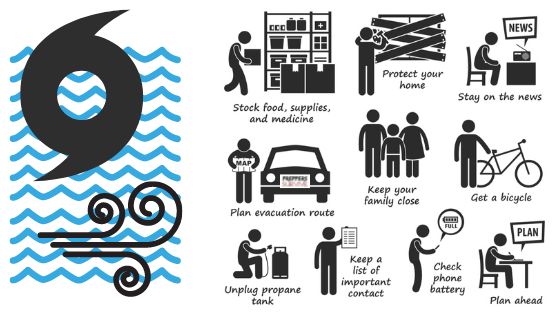
What are 10 things you need to survive a hurricane is a popular search engine question. I love this question! It shows that a large number of people are preparedness-minded. Everybody knows that when a category 3+ hurricane hits land, it can devastate a community, leaving few resources for people after a storm. However, not everyone prepares for a major storm. It is normal to feel fear when facing a powerful storm. This pumps adrenalin through the body and causes the urge to flee, freeze, or fight. To control that adrenaline from turning into panic, channel it into implementing a survival plan. Being prepared with essential supplies is the best way to eliminate panic and act calmly in the midst of a storm. Research and planning lead to better methods of preparedness.
10 Things You Need to Survive a Hurricane
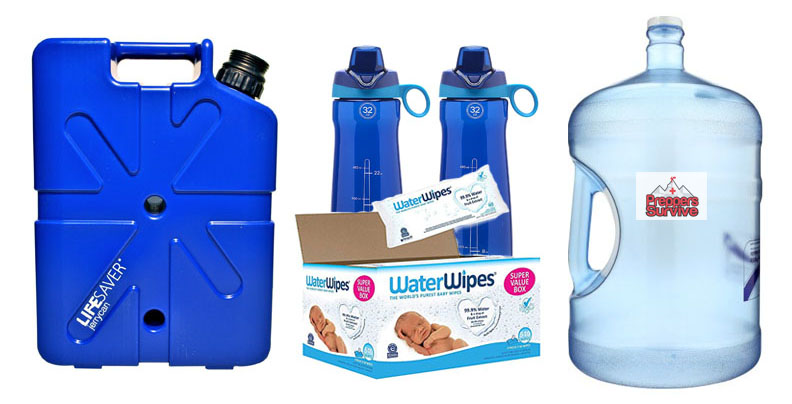
1. Water
You never know how much damage a major storm might do. Assume city water has been contaminated after a hurricane. Do not drink tap water until local officials declare it safe to drink. The general rule is to be prepared for three to twenty-one days. A good rule of thumb is to stock up on one gallon of water per person per day for any emergency. Consider filling up a bathtub right before the storm hits. Invest in a water purifier (removes bacteria+parasites+viruses) and long-term water storage containers for drinking.
. Drinking water is the most important resource you’ll need. Drinking, cooking with, or washing in polluted water can make you very sick. Using canteens and water storage containers instead of disposable water bottles cuts down on A LOT of waste. Just think, a family of four drinking 8 bottles of water per person per day for a week is a total of 224 disposable water bottles. At a time when the trash man may not be coming for a while, you may want to consider cutting down on waste.
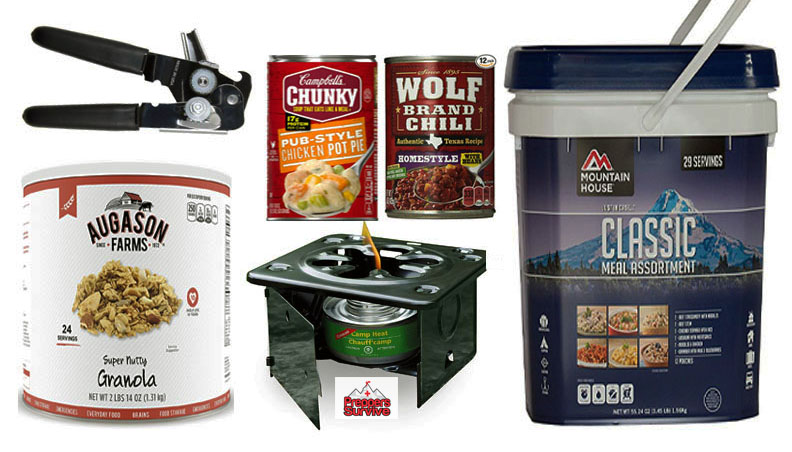
2. Food
Stock up on plenty of non-perishable foods you can prepare with only what’s in your emergency supplies. At least a 30-day supply. Canned soups and dried foods are always safe bets when it comes to disasters. Remember to keep an extra can opener and a method to heat up food in your emergency kit. Don’t forget to keep a backup stash of pet food on hand for your furry friends, too. Freeze water in Tupperware dishes or empty milk jugs to eliminate extra space in your freezer. This ice will melt so you want to make sure that it is sealed in a container that will not leak once it starts to melt. The more ice you have in your freezer, and the tighter packed it is, the longer the items will stay cold. Once the power goes out, the less you open it, the longer the items will stay cold. Also, clean out your fridge and those old ice chests. Decide which items you’ll need to store in the ice chest for your emergency meals.
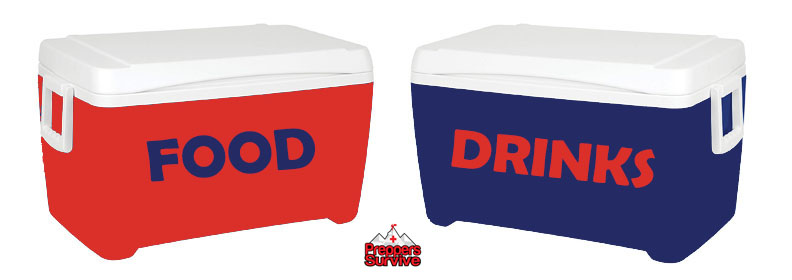
—————
3. Light
Some of the best emergency lights for a natural disaster are solar lanterns. Lanterns produce light to read, play games, organize, and look through your emergency supplies. These actions are hard to do with a flashlight. Headlamps are also a good option, although it gets annoying when you and your family are continually shining the light in one another’s eyes. Glowsticks are a great option for light in bathrooms. Here are some ideas for a power outage kit. For more Mpowered Luci Lantern, click here.
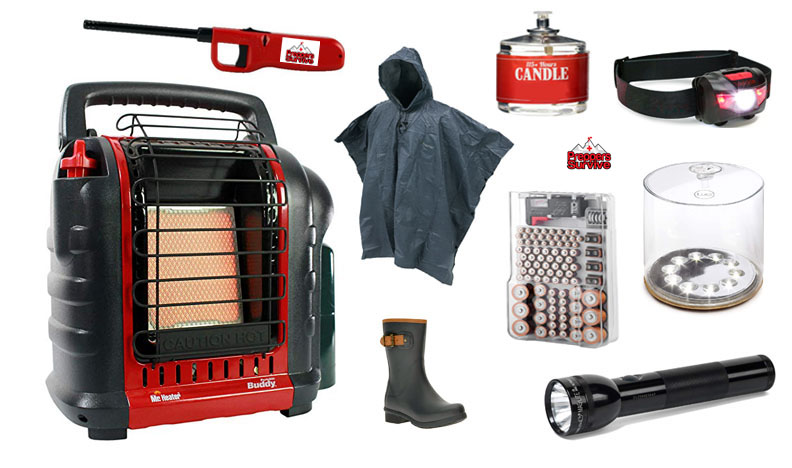
4. Warmth
If the power goes out, you’ll need a plan to stay warm. There are a couple of emergency heat sources worth considering, like a portable kerosene heater or an indoor safe propane heater. Get storm matches to add to your hurricane preps. It’s also important to have hooded ponchos, rain boots, or waders to keep you dry if you need to shut off a utility value outside. Wool hats, socks, sweaters, gloves, and wool blankets are great for trapping body heat and even work when wet, unlike down feathers, which are useless when wet.
5. Hygiene
Disasters can wreak havoc on public utilities. Water pipes and natural gas lines can rupture, and power grids can fail. A power outage can affect the operations of waste treatment plants, leaving neighborhoods backed up and unable to remove water waste from houses. So flushing the toilet, washing dishes, doing the laundry, and taking a shower may cause clogged drains, or worse, flooding in your home. This can make good hygiene nearly impossible to maintain. Have a plan for waste management, put together a hygiene kit, get disposable dishes for meals, and have baby wipes on hand to keep clean. Also, try to get caught up on the laundry and the dishes before the storm.
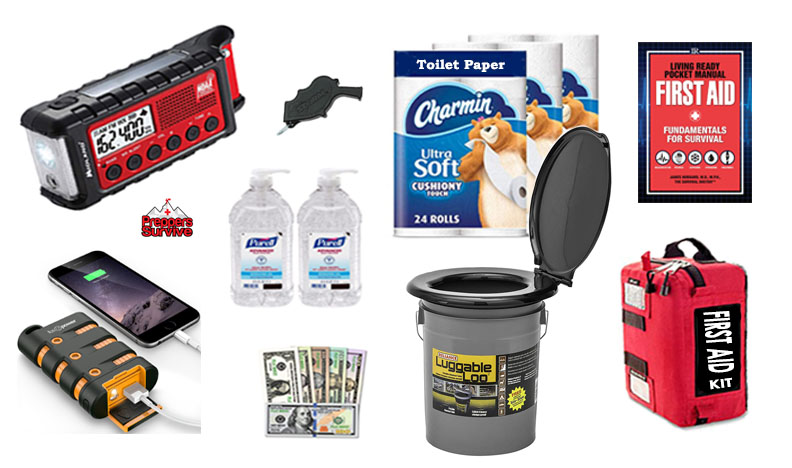
6. First Aid
Have at least a three-week supply of vitamins, over-the-counter pills, and prescription medications on hand at all times. Have a printed-out list of medications with usage directions, health conditions, and blood type for each family member. You’ll want Emergency Medications Cards easily accessible to give to first responders if necessary. Keep all medication in a waterproof container or a dry bag with other important documents. Also, have a standard first aid kit but consider adding a few supplies to help with injuries that can occur in a violent storm. Emergency blankets for hypothermia, pain relievers, a splint, tourniquet, blood clotting bandages, mosquito repellent, and mosquito nets. There’s a high rise of mosquito-borne diseases during times of flooding (Malaria, Yellow Fever, West Nile, Zika Virus).
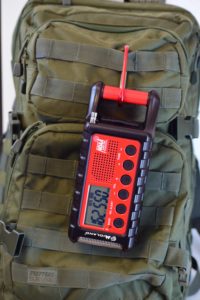
7. Communication Device
Let a close friend or family member know your plan if the worst happens. That way, if they don’t hear from you, they’ll be able to quickly report an issue or plan a rescue. Make sure to prepare an evacuation plan to prepare for a SHTF disaster and discuss it with your family. Get a storm whistle if you need to get the attention of emergency workers. Other important communication supplies include:
- weather radio
- list of local radio stations
- extra batteries
- portable power station to recharge or power cell phones, modem routers, tablets, and laptops.

8. Financial
One of the most left behind items in a quick evacuation is a wallet or purse. You may consider having a copy of your driver’s license and credit card, along with placing some cash in your emergency kit. Have enough cash to rent a hotel room, fill up your vehicle with gas a few times, and feed your family for several days. Cash and a copy of your credit card can be hidden in a wide-mouth water canteen or in a Water Bottle Can Safe. During a state of emergency, carrying around a lot of cash can be dangerous. Don’t keep all your cash in one place, have small bills (stores run out of smaller bills quickly when facing a hurricane), and carry the ATM receipt with it. Police and the National Guard may think that only criminals carry around large sums of cash so have proof it’s yours. If this seems like overkill then read Zeitoun, a book about a father who experienced the aftermath of Hurricane Katrina.
9. Protection
No matter what situation you find yourself in, protecting yourself and your loved ones from danger is incredibly important. It is possibly the most overlooked out of the 10 things you need to survive a hurricane. In the case of a natural disaster like a hurricane, you need to be prepared for anything and anyone who might cause you harm. Having self-defense weapons that you’ve been trained to use may add to your sense of safety.
This video was created by Urban Survivor. Check out some of their other videos, and don’t forget to subscribe.
10. Supplies to Protect, Escape, and Repair
The last of the 10 things you need to survive a hurricane is the ability to protect your home and personal belongings. Boarding up windows, sandbagging doors, and protecting items in plastic bags can help keep you and your stuff safe. When floodwaters get too high, people can become trapped in homes and attics. An ax, sledgehammer, or crowbar are used as rescue tools during a hurricane disaster.
- Plywood 3/4 inch (to board up windows)
- Drill (to board up windows)
- Lag screws 2-1/4 (to board up windows)
- Drill/drive bits (to drill pilot holes for the screws)
- Circular Saw (to board up windows)
Related article: How cto Board Up Windows
- Ax
- Sledgehammer
- Rope
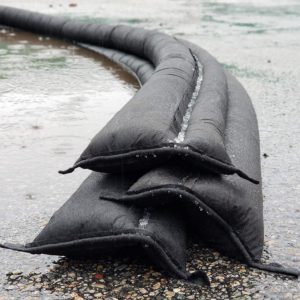
- Tarps
- Buckets for roof leaks
- A sharp pocket knife
- A pocket-sized multi-tool
- Matches in a waterproof box
- A fire extinguisher
- Gas can
- Water barrier dam
- Sandbags
- Waterpump
- Chainsaw (gas-powered)
- Flathead shovel
- Work gloves
- Protective facemask
- Heavy-duty garbage bags
- Wheelbarrow
- Crowbar
Related article: 20 Things You Shouldn’t Do After a Flood
10 Ways To Prepare Your Home For a Hurricane
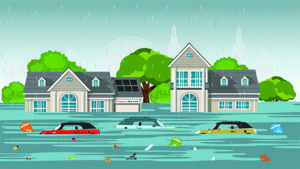
Besides having the 10 things you need to survive a hurricane, you’ll also want to make sure to make a plan for your home. Prepare your home for the barrage of wind, water, and hail that could be thrown at it during hurricane season. If there’s a big storm in the forecast, you can save yourself some serious trouble by preparing with the following tips:
1. Devise an emergency evacuation plan complete with several possible alternate locations, routes, modes of transportation, and a bug out bag for each member of the family. Remember, when a disaster strikes, there’s no time to think, plan, or strategize, so do as much as you can beforehand. Put your plans in a clearly labeled folder you can grab quickly if needed.
2. Find the safest room in your home. A safe room is typically described as an interior room without windows – for example, a closet, pantry, or a bathroom. During a tornado, it’s recommended to take shelter on the lowest floor of a building with a strong foundation, a basement is preferable. HOWEVER, hurricanes are different because of the floodwaters. The potential to become trapped in a basement (or small low-level room) by the incredible power of a storm surge makes these places very dangerous. Plan a couple of escape routes from your safe room to higher ground. One escape route might be through a wall or ceiling with the use of an ax. It’s common to move to a higher level as flood levels rise. People have been trapped in their homes and attics as water levels rise with no way of escape. You’ll want to pack food, water, meds, and other emergency supplies in waterproof containers and store them in your safe room.
3. Make sure your windows, entry doors, and garage doors are made to withstand high winds and heavy rain. You may need to board them up, DON’T just tape them. Taping windows is a safety myth that has been DEBUNKED. If you live in a high-wind zone, consider having hurricane-proof doors and impact-resistant shutters installed on your home.
4. Locate utility turn-off switches such as water, natural gas, and electricity. Check with local utility companies to stay up-to-date on advisory shut-off notices and proper shut-off procedures. For example, turning off the water to a house can damage the water heater if it’s not done properly. It’s recommended by city officials to turn off the water to your home if you are evacuating.
5. Unplug electrical devices you’re not using. Power surges can damage appliances and are common in SHTF disasters. I once had to replace a fridge, toaster, and toaster oven because of a power surge. At first, the fridge and toaster oven acted like they were still working but then we noticed items going bad in the fridge and the oven taking longer to heat items up, and by the end of the month those three items needed to be replaced costing us $1200. Many people will take a chance leaving only the fridge and freezer plugged in. So, decide what items you’re not willing to take a chance on (computer, modem, microwave, amplifier, lamps, tv, washer/dryer) and unplug them.
6. Elevate as many personal items, furniture, and books as safely possible. If you have a second story, move items that you can reasonably carry to the upper level. If you only have a single level home, then stack items you hope to save on countertops, tables, and cupboards. Secure valuables such as photos, important documents, mementos, jewelry, and expensive clothing in waterproof containers and bags (do NOT put them in the dishwasher- Debunked Myth).
7. Prepare your backyard. Trim any bushes or trees that could blow into your home or the neighbor’s home in the event of high wind. Weak, dead, or unruly landscaping is especially vulnerable to storm damage, and heavy tree limbs can cause serious destruction. Don’t forget to turn off your automated sprinklers. Lawn furniture, hoses, flowerpots, and anything else that may turn into a flying projectile, move into the garage, storage shed, or a secured location. Shut off the propane to the grill and store items safely away.
8. If you’re going to buy a diesel or gas generator, learn how to use it! Energy from the grid is the first thing to go in a high-wind situation, so having a backup power source can be helpful. However, there is a big learning curve for using and providing maintenance to a generator. Diesel and gas generators produce carbon monoxide while they are running. I know a guy that passed out from the carbon monoxide produced by his generator that he was running in his garage (the two-car garage door was open at the time). It’s recommended to operate them ONLY OUTSIDE, far from windows. This can be hard to do if there is a lot of flooding. If you are connecting it to your home then you will need to contact the local power company and other city departments to find out what is legal for your area. You’ll also need a licensed electrician to install a manual transfer switch or an interlock kit. Plugging a generator into your home without the proper electrical system can have dangerous and costly results. Consider a solar power generator (at least 2000w to run a fridge).
I bought a 2000-watt Bluetti Solar Generator to back up an energy-efficient kitchen fridge when the power grid is offline. It provides me with 12-16 hours of power, but if my 500w solar panels are connected and the sun is up, then it can power the fridge for as long as I need.
9. Take a look at all your insurance policies. Have you added supplemental policies to your homeowner’s insurance? Typical policies do NOT cover flooding & natural disasters. Along with the 10 things you need to survive a hurricane is insurance coverage for the type of damage you’re likely to see in your area. You may want to buy a separate flood or windstorm insurance policy to ensure that the most likely type of damage is fully covered. Make a video walk-through of your home and record all the items in each room, opening cupboards, closets, and drawers for the video. This can help you account for all the items in your home that may be unrecognizable. Then you can refer to the video to accurately claim the lost and damaged items with your insurance company.
10. Take inventory of all the floatation devices you own. Life jackets, blow-up beds, inflatable boats, and inner tubes could save your life in an SHTF disaster. Drowning is the number one cause of death in a meteorological disaster. It took a couple of weeks before the water receded after Katrina and a month after Hurricane Harvey. That’s a long time to be trapped by floodwaters unless you had a boat! Before and during a hurricane, it’s too dangerous to be out in a storm, while flash flooding and storm surges are at their worst. However, once the powerful current dies down, rescuers take to the water in their boats to help those in need. One man that survived Hurricane Katrina used his boat to find friends, save animals, and respond to shouts of help.
Wicked storms seem to be the norm in the new millennium. Follow mandatory evacuation mandates immediately. With that being said, preparation may minimize serious injury and property damage. So what are 10 things you need to survive a hurricane? Try to memorize the list so you will always have it when you need it.
Thanks for visiting Preppers Survive. Before you leave subscribe to our newsletter. If you enjoyed this what are 10 things you need to survive a hurricane, please share it on your favorite social media.
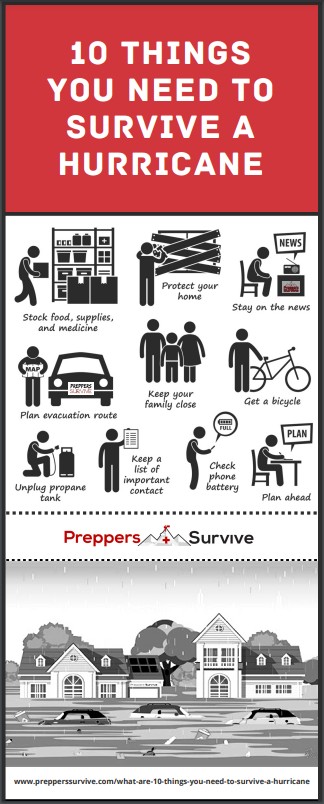


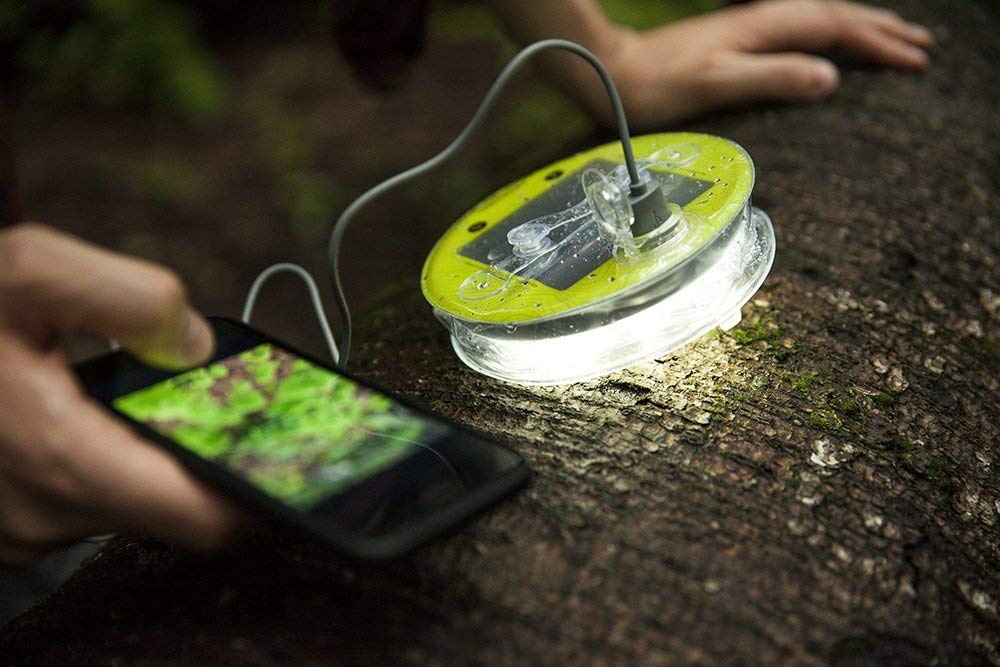
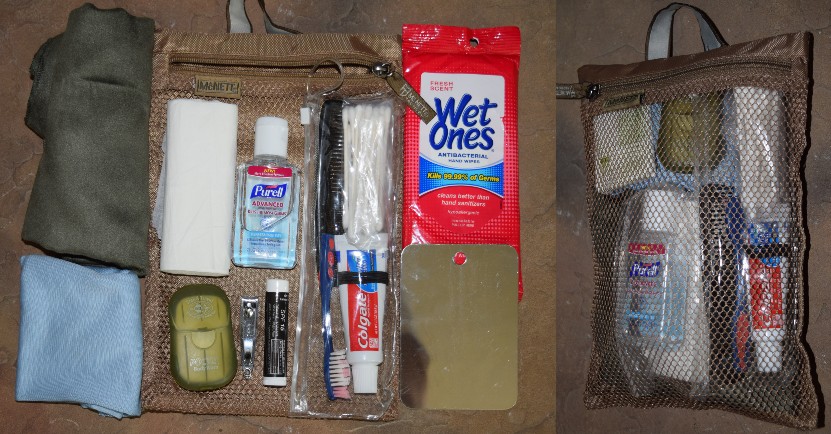
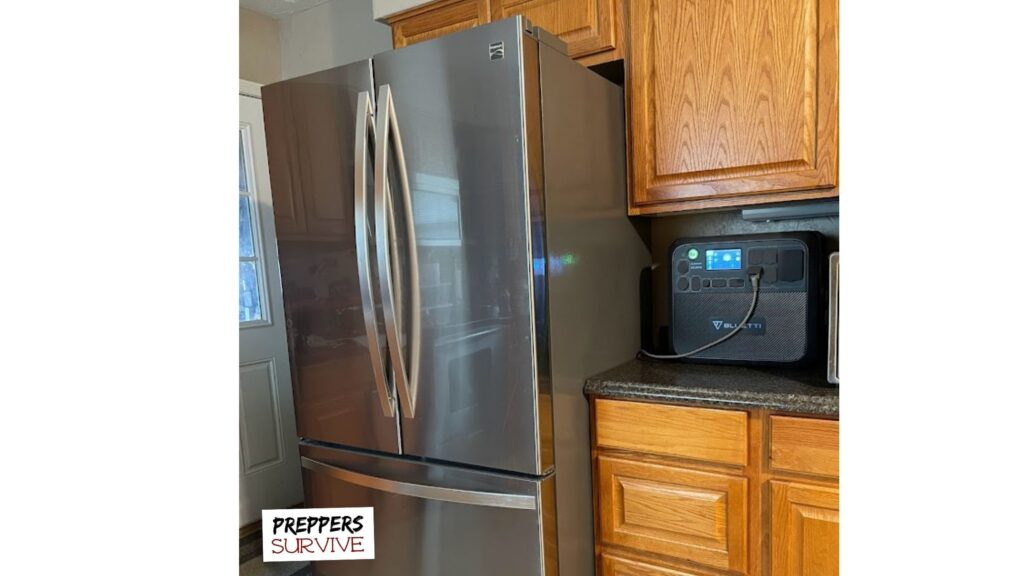
Leave a Reply